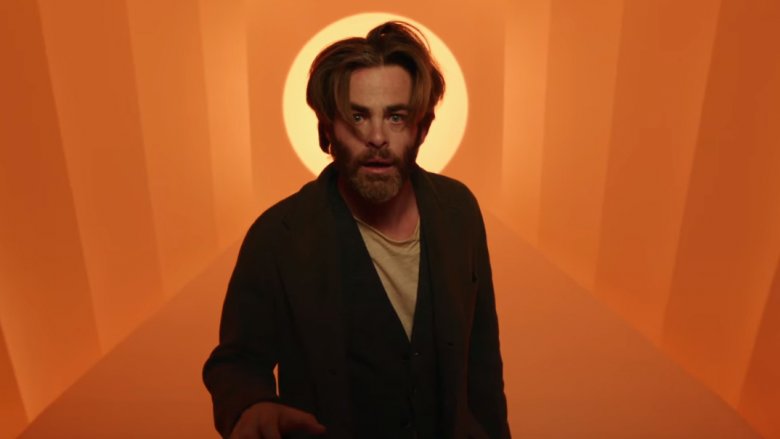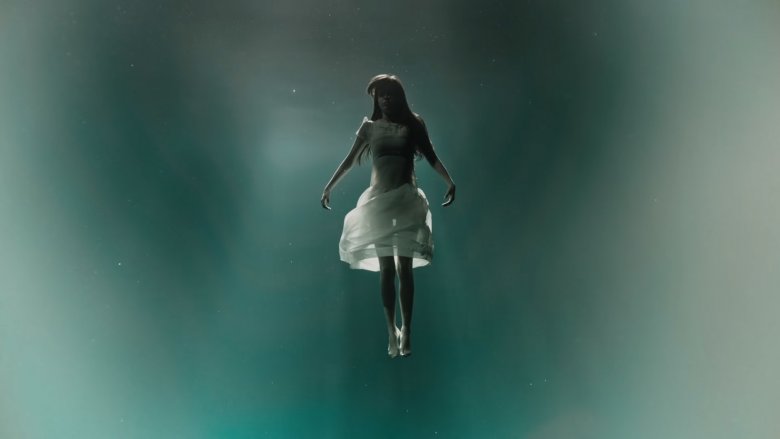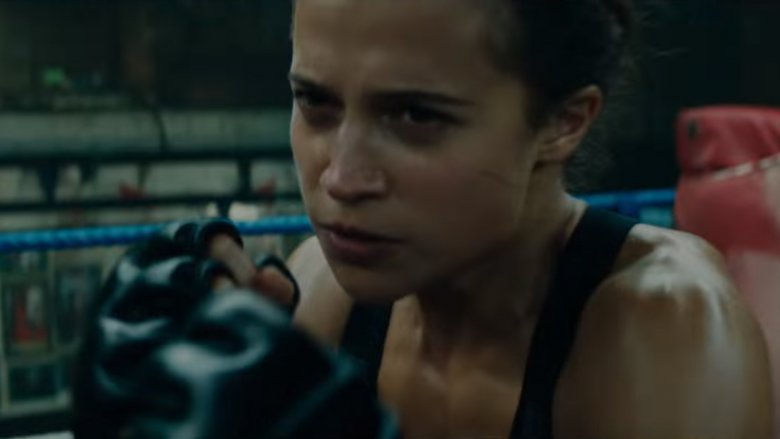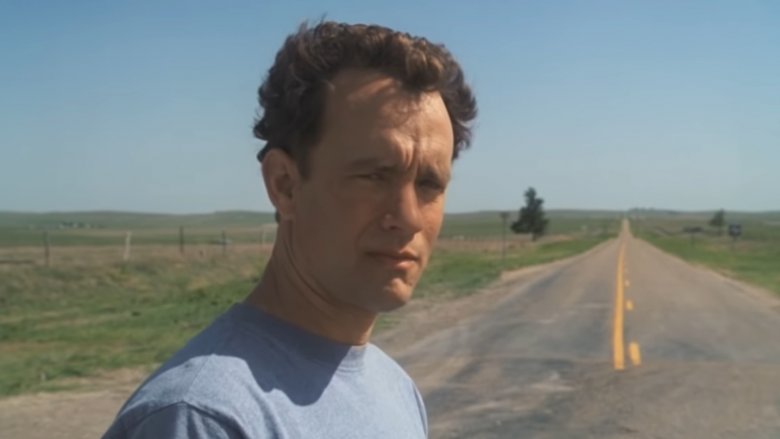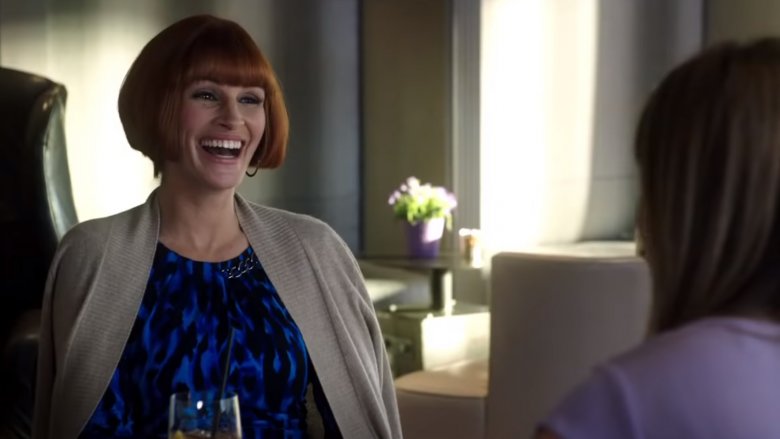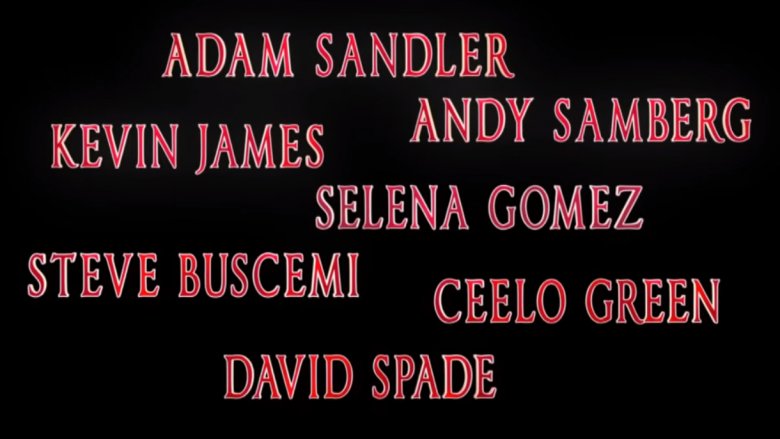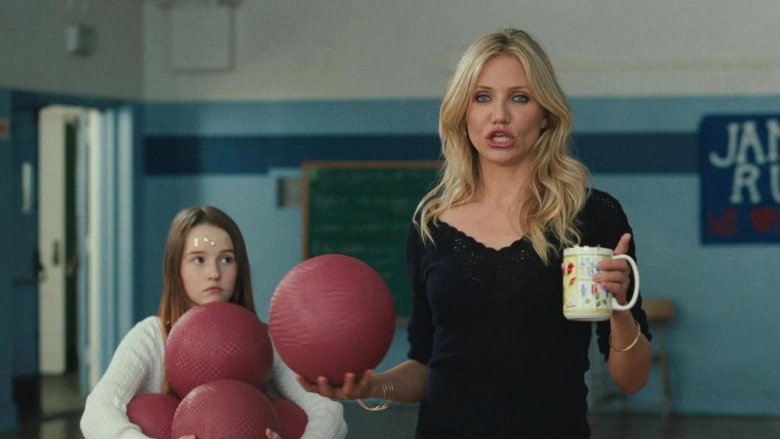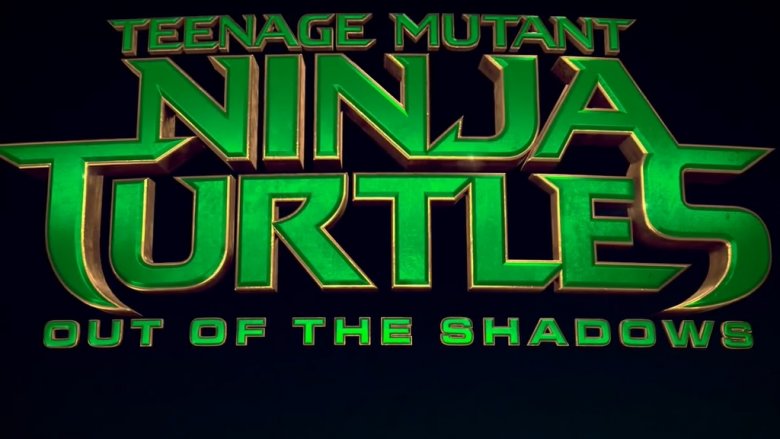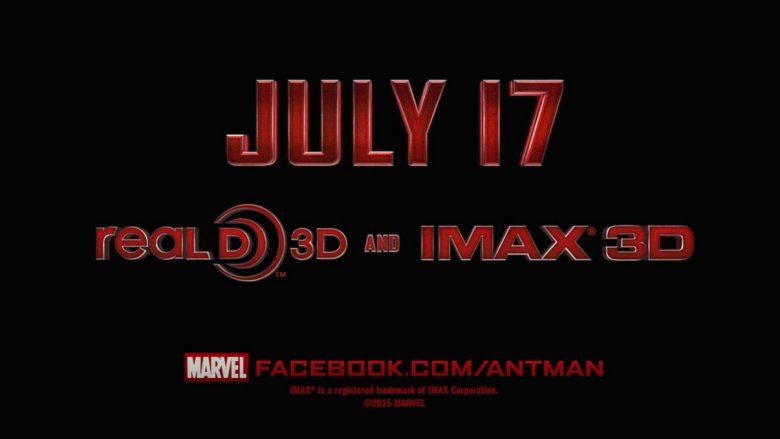What Movie Trailers Are Doing To Manipulate You
The quality of a trailer has the potential to make or break a movie at the box office. Because of this, perhaps no single category of video on the internet is as meticulously fussed over as movie trailers, with every note of music and every frame of action being carefully selected for maximum impact. Given how much attention they receive, movie trailers have evolved into their own art form, existing somewhere in the space between a short film and a music video.
But like any genre of art, movie trailers have conventions. They rely on tricks and tropes to get us hooked, to sell us a story, to manipulate us. Some of these techniques are recent trends, whereas others stretch back for generations. Some are clunky and obvious, and these will probably end up just being passing fads. Others are far subtler and way more effective. But fair warning, once you see the gimmicks, you won't be able to unsee them. Without further ado, these are the masterful techniques, recurring cliches, and underhanded tricks that modern movie trailers are using to manipulate you.
Movie trailers will take a pop song and make it creepy
When you need a song for the trailer of your big budget Hollywood film, there's only one option. First, think of an upbeat pop song with lyrics that have some surface-level similarity to the premise of your film. Then, slow it way down. Finally, re-record the vocals with a female singer, after instructing her to sing as quietly and creepily as possible. Voila, instant trailer song!
This phenomenon probably got its start with the trailer for The Social Network, which features a cover of Radiohead's "Creep." Since then, it's been everywhere, in trailers for movies such as Justice League ("Heroes"), Ready Player One ("Pure Imagination"), A Cure For Wellness ("I Wanna be Sedated"), Dracula Untold ("Everybody Wants to Rule the World"), A Wrinkle in Time ("Sweet Dreams"), Geostorm ("What a Wonderful World"), and San Andreas ("California Dreamin'").
Exactly why this formula caught on is difficult to say, but it might be an example of how the entertainment industry weaponizes nostalgia to grab viewers' attention. By taking a pop song that the audience recognizes, there's an instant spark of familiarity. Then, by making it creepy, it makes the song seem fresh and also possibly deeper and more mature. If you think about it, "take a pop song and make it creepy" is the musical equivalent of taking something from our childhood and giving it a grim and gritty reboot, making it the perfect soundtrack for our current generation of cinema.
Making the hits hit even harder
If you're making a trailer in today's world, then when it comes to sound effects, you want as many as possible, as loud as possible. Punches and kicks need to hit like a semi-truck. Any time you see a gun on screen, put in the "click" sound of the hammer being cocked, even if it isn't being cocked at the time. And if there's an explosion, blow those speakers out with a dubstep drop. Never forget that it's your sworn duty as a trailer editor together to give everyone in the audience hearing damage.
We've established by now that you're going to be playing an old pop song during your trailer, but if you've decided you don't want to record a new creepy cover, then at the very least, you need to juice that song up. Crank up the bass and the drums as loud as they'll go. The first trailer for Ocean's 8 had the right idea, with its "trailerized" version of Nancy Sinatra's "These Boots Are Made for Walkin'." So does the second one for Atomic Blonde, which uses a mashup of Depeche Mode's "Personal Jesus" and Kanye West's "Black Skinhead." In the second trailer for Tomb Raider, notice how every sound effect is comically loud, with every punch or gunshot accompanied by a big drum hit. This one also gets bonus points for properly creepifying its song choice, the wonderfully on the nose "Survivor" by Destiny's Child.
Movie trailers give everything away
Typically, if a movie is really good, a trailer can just show you the basic premise of the beginning of the film, and you'll be in. Maybe it'll give away one of the lesser jokes or early action set pieces, but all of the later plot twists and big climactic moments will still be kept secret for when the film finally comes out.
However, sometimes the marketing department just doesn't know how to chill, and the trailer ends up giving away the entire movie. Trailers for The Last House of the Left, Terminator Salvation, and Batman v Superman: Dawn of Justice all give away major plot twists, and if we had to guess the reason why, it's probably because the marketing department didn't have much confidence in these films, and decided to make up for quality of information with sheer quantity.
Perhaps the most baffling example of all is the trailer for a genuinely good movie, Cast Away. It not only shows that Tom Hanks' character is going to get stranded on an island for four years, but also that, at that at the climax of the film, he's going to get rescued and return to civilization. He's then going to discover that his girlfriend married someone else, and he needs to start life over, now more or less alone. The final shot of the trailer is the final shot of the film. There's literally nothing left to show after that.
Manipulation through on-screen reactions
Beyond just amping up the sound effects, what other ways can trailers "enhance" a moment to make it hit harder than it otherwise would? One classic way is to follow it up with a reaction shot. This shot will feature a character experiencing the emotion that the trailer wants us to feel. Sometimes this reaction shot will actually follow the event depicted on-screen in the final film, but other times, it'll be pulled from a totally different part of the movie altogether.
Much like an old sitcom laugh track trying to convince you that a middling joke is a real howler, a reaction shot in the middle of a trailer aims to tap into the audience's empathy for the characters and create a sort of faux communal experience based around social mimicry and behavioral contagion. Whatever they're feeling, we're feeling. At least, that's the idea.
Notice how often throughout the trailer for Ready or Not, there are brief cutaways of the main character being scared. Are the fantastical things that we're being shown throughout the final trailer for The Nutcracker and the Four Realms really all that impressive, or do they just seem that way because of all the reaction shots of characters experiencing wide-eyed awe? In the trailer for Mother's Day, there are dozens of shots of characters smiling or laughing ... but try counting how many actually good jokes occur.
Bombarding us with actors' names
When putting together a film trailer, if you don't necessarily have quality, you can always opt for the brute force option. Stuff your movie with as many famous people as you can afford, and then use your trailer as a way to shotgun the audience with a massive list of every recognizable person who agreed to participate.
This approach is a time-honored tradition in the world of ensemble comedies, dating all the way back to 1963 with It's a Mad, Mad, Mad, Mad World, where the trailer boasted "everyone who's ever been funny is in it." It might not be the most elegant approach, but apparently it works, because film studios keep doing it, especially with middling comedies like Movie 43, Horrible Bosses, and Valentine's Day.
Another genre that has become particularly notorious for this type of marketing over the past few years is children's animation. Sure, a kid might not know who Wanda Sykes or Matthew McConaughey are, but their parents sure do, and they're the ones making the final decision about what movies the family is going to buy tickets for. Most of the time, Disney and Pixar stray away from marketing campaigns that are as blatantly transparent as this, but this is the bread and butter of studios like Dreamworks and Illumination, who built their trailers for movies like Over the Hedge and Sing entirely around showing off their all-celebrity voice casts.
Playing that Inception sound
The "braaam" is a truly iconic trailer sound. It's sort of like a tuba, sort of like a whale, and a lot like the sound a robot would make after stubbing its toe. And for the past decade or so, it's been Hollywood's favorite sound effect.
Exactly when the sound effect first appeared is difficult to say. The earliest version that we can find occurs not in a trailer but during Star Wars – Episode II: Attack of the Clones. In that movie, the "seismic charges" used by Jango Fett during a chase scene through an asteroid belt make a sound very similar to that now iconic drone. But the "braaam" truly broke out of obscurity with Inception, when Hans Zimmer used that one repeating drone over and over again as a central element of the film's soundtrack.
Nowadays, it's ubiquitous, especially in big budget action movies. You'd think that, out of all the trends on this list, this one obnoxious sound effect is the most likely to just be a passing fad. A few years from now, people will look back on the Inception sound as a defining element of the 2010s, the way that electric drums now immediately sound like the '80s. Then again, this sound effect has stuck around for an entire decade already, and its use only seems to be increasing, so who knows? Maybe the "braaam" is here to stay.
If it's a comedy trailer, expect head trauma
In previous generations, the classic recipe for low-bar humor was men getting hit in the groin. But over the past decade or so, we've evolved as a culture, become more refined. Now movie trailers are all about people getting whacked in the head.
Sometimes it's a punch, like in Hall Pass. Sometimes it's a series of elbows, like in Baywatch. It might even be a foot, like in You Don't Mess With the Zohan. Movies such as Bad Teacher and Daddy's Home even feature women getting whacked in the head in their trailers. Just look at how far we've come as a society.
If we seem dismissive of slapstick, it's only because this single visual joke seems like the only one that some modern films know how to do. We'd love a variety of physical comedy in our trailers besides just cheap humor. There's a lot more that can be done in the realm of visual gags than just "someone gets hit in the face."
Although we have to admit, this one from Sex Tape genuinely made us chuckle.
A giant title is majorly manipulative
If you really want to sell your film as a must-see event, then when the title finally shows up, it has to be enormous. Sure, the screen of a movie theater might be called the "big screen," but your movie is even bigger than that.
Maybe you slowly reveal the title over the course of trailer, one letter at a time, like in the trailer for Prometheus. Alternatively, when your title starts to appear, maybe we're inside of it, and we don't even realize it yet. There are just strange shapes hovering above us. We have to zoom way out before we can see that we were actually inside a consonant all that time. This is the approach used in the trailers of The Mummy and Transformers: The Last Knight. Or maybe we're just minding our own business in a featureless black void before letters the size of skyscrapers start falling from the sky and crashing down all around us. Teenage Mutant Ninja Turtles: Out of the Shadows opted for this approach.
When we finally see the whole title at once, it's going to feel like a monument towering over our heads. This sells the idea that the movie, much like its title, is an enormous event that looms above us. It's inescapable. Like an alien invasion, it will demolish our zeitgeist. We will have no choice but to watch it.
Trailers turn release dates into jump scares
At the end of a trailer, we're going to get the title of the movie, and then probably one final clip from the film. And that's when the release date is going to pop out at us like a jump scare, complete with a high-pitched horror movie sting. No fade out or fade in. Just a jump cut and a clang or maybe a violin screech. And then, boom, here comes the release date.
Weirdly, the type of film that seems most likely to employ this technique are superhero movies, like Ant-Man, Batman v Superman: Dawn of Justice, and X-Men: Apocalypse. To be fair, as we lay asleep at night and stare into the darkness, some of the most common things that we tend to imagine lurking at the foot of our beds are movie monsters. It follows that treating the release date like it's a horror movie monster that could jump out and grab us at any moment is certainly an effective (and manipulative) way to make it memorable.
So step aside, Freddy Kruger. Look out, Samara. There's a new monster in town, and it's the release date of the latest blockbuster.
